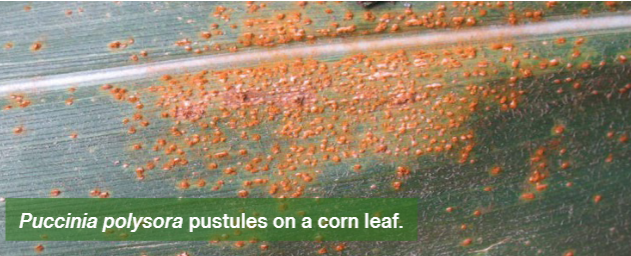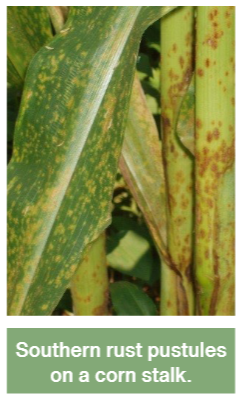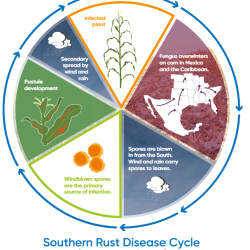Southern Rust in Corn: A Growing Concern for 2025
Eric Solberg, Eastern Product Agronomist
Eric Solberg, Eastern Product Agronomist

Southern rust is a lesser-known but potentially devastating fungal disease in corn, caused by Puccinia polysora. Unlike the more common rust diseases in North America, southern rust cannot overwinter in the Corn Belt. Its life cycle begins in southern states, where urediospores develop and spread northward on weather systems. While it doesn’t occur as often in the Corn Belt, when conditions are right, it can cause significant damage.
This past summer presented the perfect storm for southern rust, with high temperatures exceeding 77°F and high relative humidity, creating ideal conditions for its spread. Here’s what every grower should know about this disease, its impacts, and how to manage it effectively.

Southern rust can be more destructive than common rust due to its rapid spread and impact on plant health. Here are some of the ways it affects corn production:

Southern rust thrives on windborne urediospores, which can travel hundreds of miles. Here’s a breakdown of how it develops:
Southern rust typically emerges later in the growing season, especially in southern states. However, it can move deeper into the Corn Belt in years with above-average temperatures, as observed in late summer 2024.
Infections were first reported in the Corn Belt on July 26, 2024, and peaked again on September 10, 2024. Look for:
While prevention is challenging due to the disease's reliance on weather conditions, growers can take several steps to minimize its impact:

While southern rust remains unpredictable, understanding its life cycle and impact can help growers mitigate losses. As we approach the 2025 growing season, proactive management and vigilance will be key to protecting your corn yields.
For more agronomic insights and to connect with experts. Together, we can tackle challenges like southern rust and ensure successful harvests for years to come.

Sources: